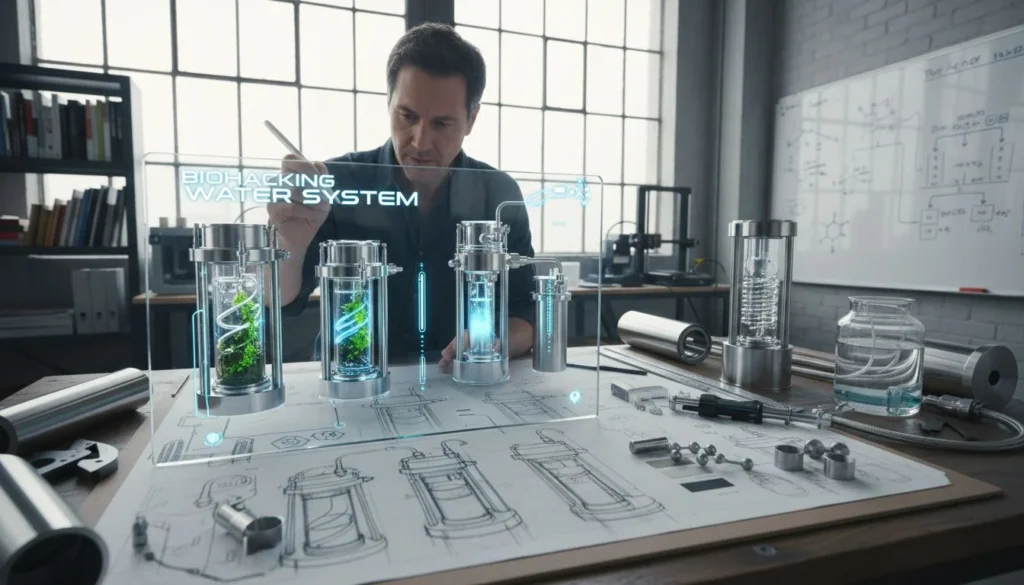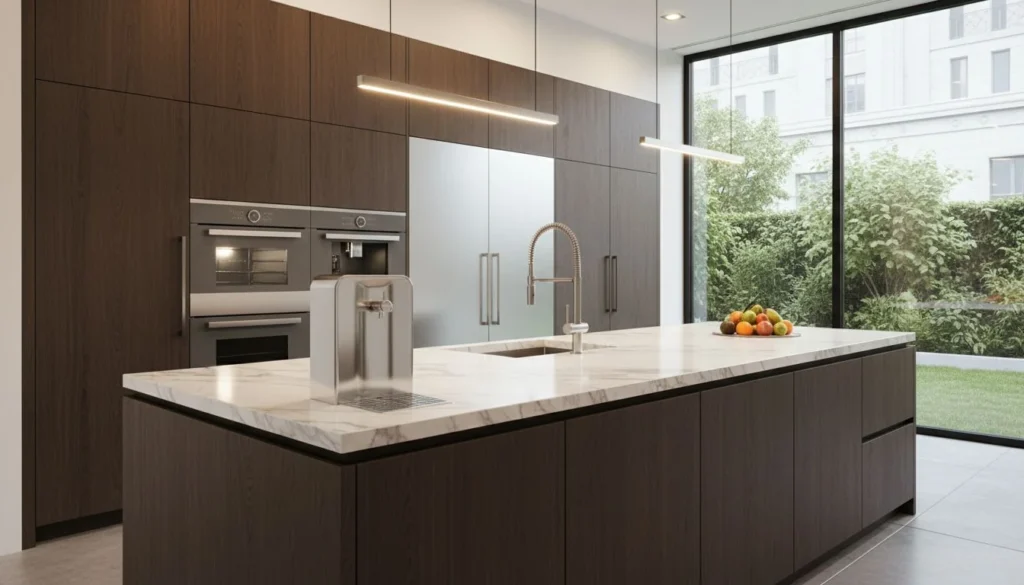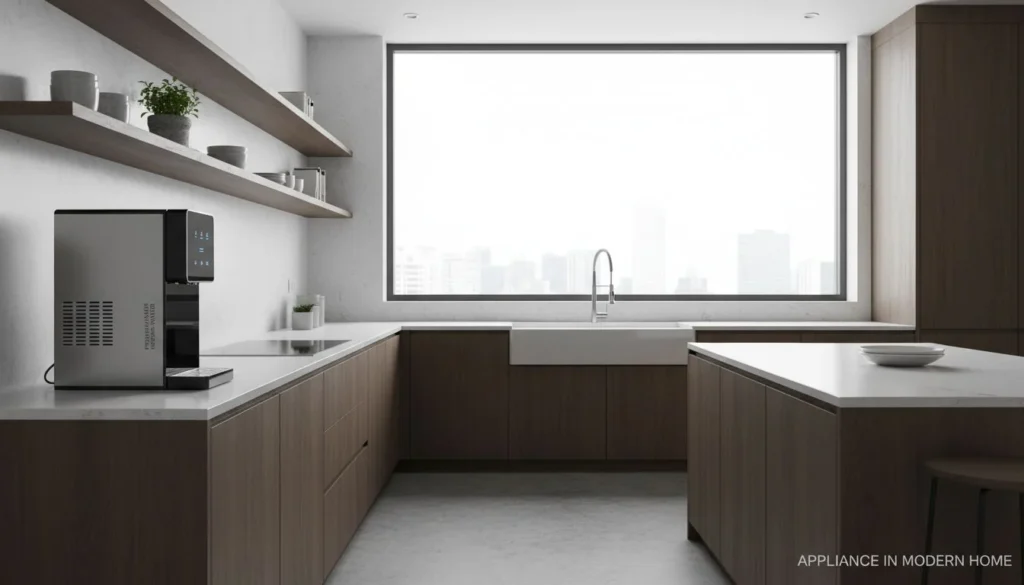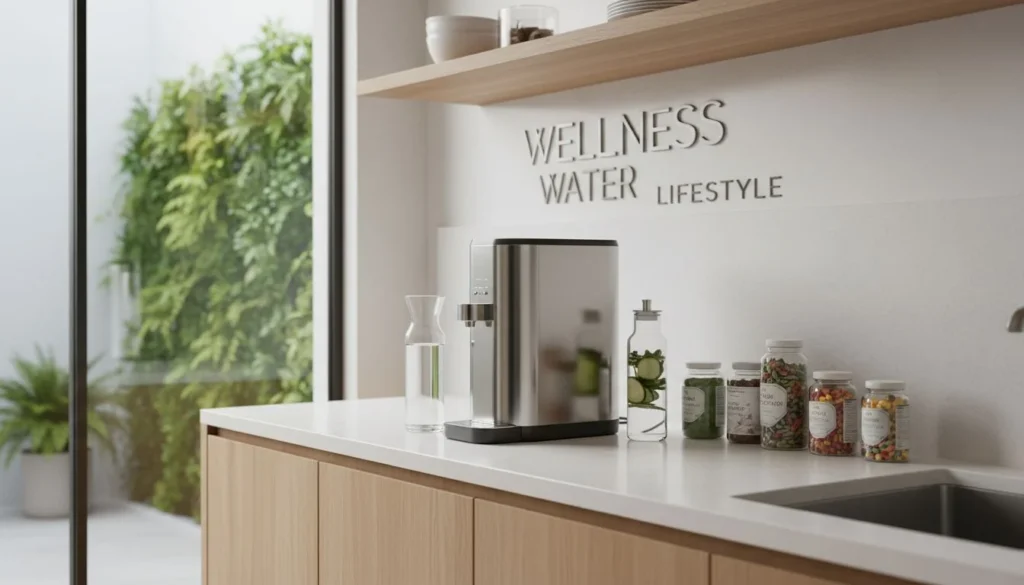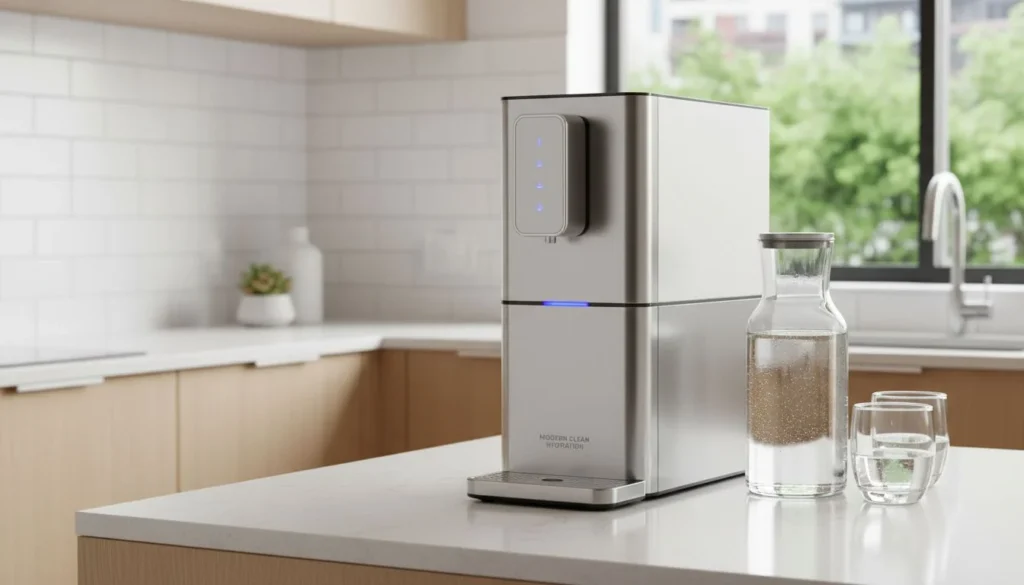
특히 공기 질이 화두로 떠오르면서 집에서의 편안한 호흡이 그 어느 때보다 중요해졌습니다. 공기청정기나 HVAC 업그레이드 등 다양한 선택지가 있지만, 어떤 것이 공기를 깨끗하게 유지하는 데 가장 적합한지 결정하기 어려울 수 있습니다.
공기청정기는 고효율 덕분에 공기 중 작은 입자와 알레르기 유발 물질을 제거하는 데 기존 HVAC 시스템보다 더 효과적인 경우가 많습니다. HEPA 필터. HVAC 시스템이 집 전체의 온도와 습도를 관리하는 반면, 공기청정기는 특정 공간에 집중하여 0.3마이크론만큼 작은 입자 99.97%를 포집합니다.
알레르기로 인해 집 안에서 보이지 않는 적과 싸우는 것 같은 기분이 들었던 때가 기억납니다. 그때부터 공기청정기와 HVAC 시스템에 대해 알아보기 시작했습니다. 공기청정기는 고급 여과 기능으로 특정 구역을 대상으로 하는 데 탁월한 반면, HVAC 시스템은 집 전체의 온도와 습도를 관리하여 집안 전체를 쾌적하게 만드는 중추적인 역할을 합니다. 이러한 결정을 내릴 때는 비용, 규정 준수 표준, 향후 기술 트렌드까지 꼼꼼히 따져봐야 합니다.
이러한 옵션을 살펴보다가 실용성과 편안함 사이에서 고민하게 되었습니다. 공기청정기는 일반적으로 더 저렴하고 온라인에서 쉽게 구할 수 있어 즉각적으로 안심할 수 있는 매력적인 선택입니다. 한편, HVAC 시스템을 업그레이드하는 것은 막대한 투자가 필요하지만 집이나 사무실의 구조에 매끄럽게 통합될 수 있습니다. 코로나19 이후 깨끗한 실내 공기에 대한 수요가 급증하면서 공기 정화 기술과 HVAC 시스템 간의 스마트한 통합과 같은 혁신이 이루어지고 있습니다. 이러한 추세는 실내 공기질 문제를 해결하는 방식에 혁신을 불러일으킬 수 있으며, AI 및 IoT 를 통해 더 스마트한 솔루션을 제공합니다.
공기청정기는 HVAC 시스템보다 비용 효율적입니다.True
공기청정기는 온라인으로 구매할 수 있지만, HVAC 시스템은 설치 비용이 많이 듭니다.
HVAC 시스템은 공기청정기처럼 HEPA 필터를 사용합니다.False
HVAC 시스템은 일반적으로 HEPA가 아닌 MERV 필터를 사용하는데, 이는 효과가 떨어집니다.
공기청정기와 HVAC 시스템의 여과 방식은 어떻게 다를까요?
공기청정기가 일반 공조 시스템과 무엇이 다른지 궁금한 적이 있나요? 공기청정기의 독특한 필터링 비밀을 자세히 알아보세요.
공기청정기와 HVAC 시스템의 여과 능력은 매우 다양합니다. 공기 청정기에는 다음과 같은 기능이 탑재되는 경우가 많습니다. HEPA 필터는 0.3마이크론 크기의 작은 입자를 99.97%까지 포집하는 데 탁월합니다. 반면, HVAC 시스템은 MERV-등급 필터를 사용하여 더 큰 입자에 더 집중하고 전반적인 환기를 유지합니다.
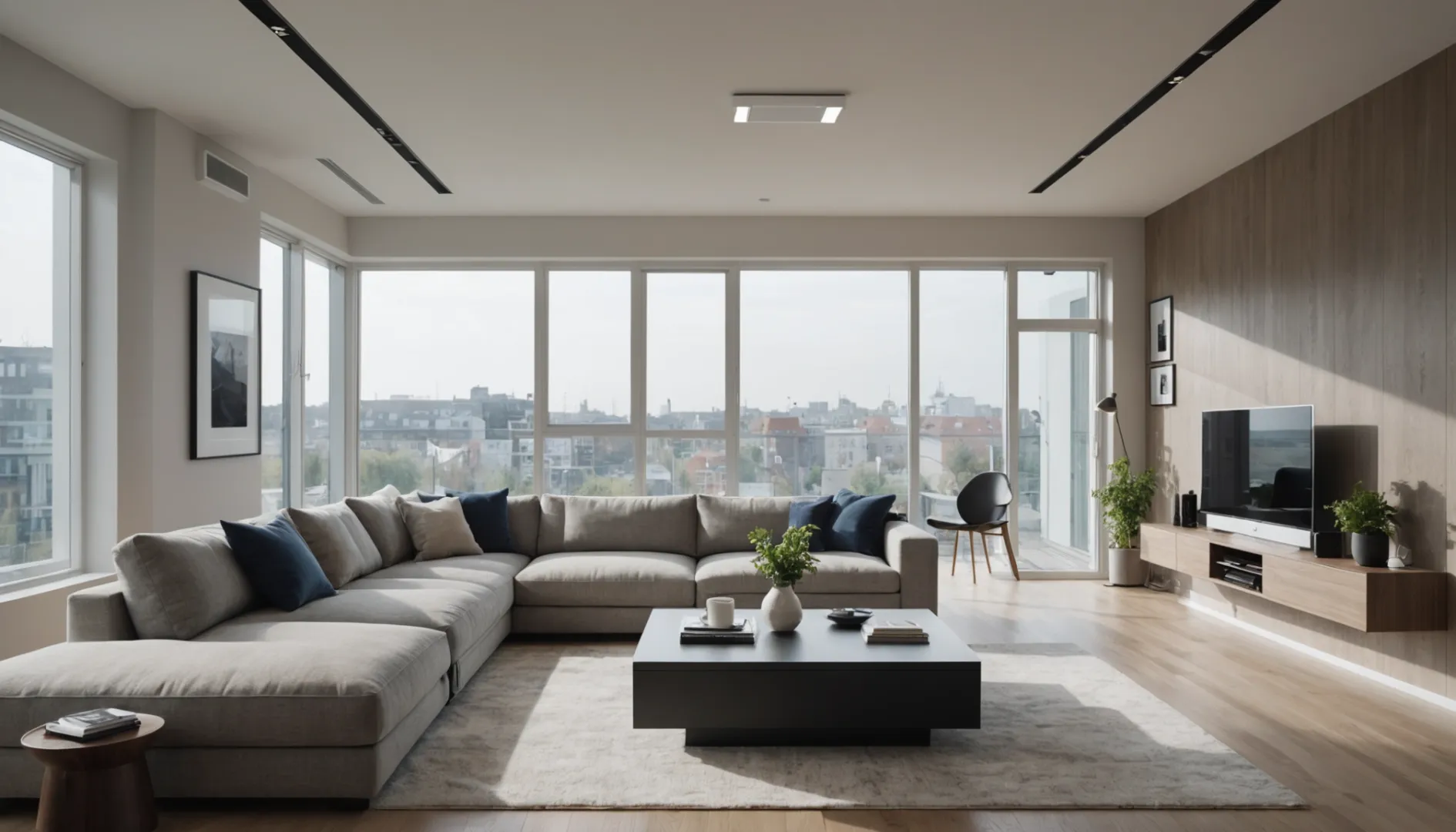
이해 HEPA 그리고 MERV 필터
처음 아파트의 먼지 문제를 해결하기로 결심했을 때가 기억납니다. 저는 공기청정기를 선택했는데, 고효율 미립자 공기(HEPA) 필터는 애완동물의 비듬이나 꽃가루와 같이 제 알레르기를 유발하는 아주 작은 입자까지 잡아낸다고 약속했습니다. 이 HEPA 필터는 99.97%의 효율로 0.3마이크론의 작은 입자까지 걸러내는 놀라운 성능을 자랑합니다. 반면에 우리 빌딩의 HVAC 시스템을 살펴보니 최소 효율 보고 값(MERV) 필터를 사용합니다. 이러한 필터의 범위는 다음과 같습니다. MERV 1에서 MERV 16으로 수치가 높을수록 여과 성능이 좋지만, 제가 믿고 사용하는 공기청정기의 정밀도에는 미치지 못했습니다. 자세히 알아보기 HEPA 필터1.
대기질 관리에서의 역할
집안의 공기질을 관리할 때, 저는 거실이나 침실처럼 우리가 가장 많은 시간을 보내는 특정 공간에 공기청정기를 설치하는 것을 선호합니다. 이와는 대조적으로 HVAC 시스템은 집 전체에 걸쳐 온도와 습도를 조절하는 집안 온도 조절의 중추입니다. 정밀한 여과보다는 공기 흐름에 중점을 두기 때문에 저와 같이 작은 입자를 효과적으로 처리하고 싶은 경우 고려해야 할 핵심 사항입니다. HVAC 시스템의 이점 살펴보기2.
비용 고려 사항 및 규정 준수 기준
저에게는 확실히 비용이 중요한 요소였습니다. 공기청정기는 특히 Amazon과 같은 플랫폼을 통해 온라인에서 꽤 저렴하고 쉽게 구매할 수 있다는 것을 알았습니다. 공기청정기는 미국 가전제품 제조업체 협회(AHAM) 표준을 준수하기 때문에 그 효과에 대해 어느 정도 안심할 수 있었습니다. 하지만 HVAC 시스템 옵션을 확인해보니 맞춤형 설계와 설치가 필요하고 상당한 투자가 필요하다는 것을 알 수 있었습니다! 이러한 옵션은 미국 난방, 냉장 및 공조 기술자 협회(ASHRAE), 이는 신축 건물에 필수적인 요소입니다. 코로나19 이후 공기질 문제에 대한 인식이 높아지면서 공기 정화 기술을 HVAC 시스템에 통합하는 것이 점점 더 대중화되고 있습니다. 발견하기 AHAM 그리고 ASHRAE 표준3.
필터링 기술의 미래 트렌드
코로나19 이후 실내 공기질을 바라보는 시각의 변화는 놀랍습니다. 웰큐브의 휴대용 공기청정기와 같은 혁신 기술이 기존 건물 인프라와 통합되어 큰 파장을 일으키고 있는 것을 보았습니다. 이러한 기술은 AI와 IoT 를 통해 공기질 관리 방식을 획기적으로 개선할 수 있습니다. 실내 공기를 깨끗하고 건강하게 유지하기 위한 더 스마트한 솔루션을 원하는 사람들에게는 미래가 밝아 보입니다. 공기 정화 트렌드에 대한 최신 정보4.
공기청정기는 HVAC 시스템보다 비용 효율적입니다.True
공기청정기는 저렴하고 온라인으로 구매할 수 있는 반면, HVAC 시스템은 설치 비용이 많이 듭니다.
HVAC 시스템은 공기청정기처럼 HEPA 필터를 사용합니다.False
HVAC 시스템은 일반적으로 HEPA가 아닌 MERV 필터를 사용하는데, 이는 효과가 떨어집니다.
공기청정기와 HVAC 시스템의 비용 고려 사항은 무엇인가요?
공기청정기와 HVAC 시스템 중 하나를 선택하는 것은 믿을 수 있는 세단과 고급 SUV 중 하나를 선택하는 것과 비슷할 수 있습니다. 각 제품의 비용과 이점을 자세히 살펴보고 우리 집에 적합한 제품을 찾아보세요.
공기청정기는 일반적으로 HVAC 시스템에 비해 초기 비용이 저렴하고 설치가 간단합니다. 그러나 HVAC 시스템은 집 전체의 공기질을 종합적으로 개선하며, 종종 고급 정화 기술을 통합하여 장기적인 가치에 영향을 미칩니다.
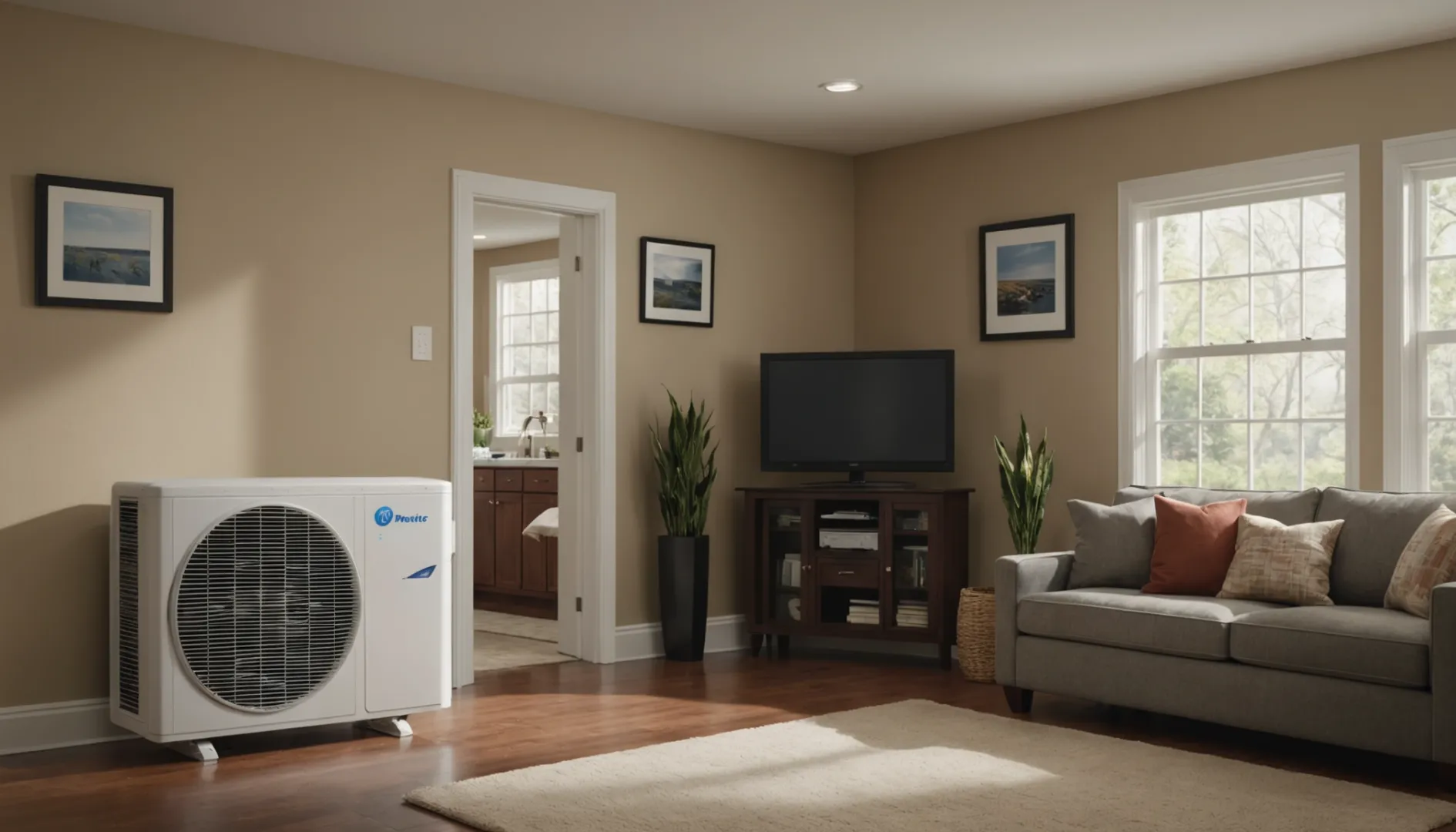
초기 비용 및 설치
처음 집안 공기질 개선을 고려했을 때 저는 공기청정기의 간편함에 끌렸습니다. 독립형 공기청정기는 온라인으로 쉽게 주문할 수 있었고, 몇 번의 클릭과 몇 백 달러만 지불하면 바로 배송되었습니다. 반면에 공조 시스템을 생각하면 새 차 구입을 고려하는 것 같은 기분이 들었습니다. 전문 설치 비용은 말할 것도 없고 초기 비용이 훨씬 더 많이 들기 때문입니다. 새 집을 짓거나 오래된 시스템을 교체하는 경우 상당한 투자가 될 수 있습니다.
그리고 HVAC 설치 비용5 집의 규모와 시스템의 복잡성에 따라 수천 달러에서 수만 달러까지 다양합니다. 하지만 기술의 발전으로 시간이 지남에 따라 초기 비용이 높아지는 것을 정당화할 수 있는 더 효율적인 시스템이 개발되었습니다.
운영 및 유지 관리 비용
시간이 지나면서 저는 이러한 시스템을 유지 관리하는 것이 진정한 노력이라는 것을 깨달았습니다. 저희 집의 HVAC 시스템은 일 년 내내 시계처럼 작동하여 계절에 관계없이 집이 쾌적하게 유지되도록 합니다. 따라서 필터를 교체하고 가끔씩 서비스를 받는 등 정기적인 유지보수가 필요합니다. 긍정적인 측면은 전반적인 에너지 효율을 높여 공공요금을 절감할 수 있다는 점입니다.
공기청정기는 에너지 소비는 적지만 필터를 자주 교체해야 하며, 특히 다음과 같은 필터를 사용하는 공기청정기는 더욱 그렇습니다. HEPA 필터를 사용하세요. 집 주변에 여러 대의 장치가 있는 경우 누적 비용이 늘어날 수 있습니다.
장기적인 가치와 통합
장기적인 가치는 실제로 가정의 특정 요구 사항에 따라 달라집니다. 저희 가족은 알레르기가 있는 가족 구성원이 있어서 정화 기술이 통합된 HVAC 시스템의 종합적인 솔루션은 당연한 선택이었어요. 오염 물질뿐만 아니라 호흡기 질환이 있는 사람들에게 중요한 습도와 온도도 관리할 수 있습니다.
통합하는 경향이 증가하고 있습니다. HVAC를 통한 공기 정화 기술6 시스템. Wellcube와 같은 혁신은 AI를 사용하여 더 스마트한 공기질 관리를 약속합니다. IoT. 이로 인해 초기 비용이 추가되지만 효율성 향상을 통해 장기적으로 상당한 비용을 절감할 수 있습니다.
진화하는 표준과 트렌드
실내 공기질에 대한 인식이 높아짐에 따라 공기청정기와 HVAC 시스템 모두 한 단계 더 발전하고 있습니다. 엄격한 기준을 충족해야 합니다.AHAM 정화기 및 ASHRAE HVAC 시스템용.
임박한 2025년 법률7 는 정화 기술을 HVAC 시스템에 더욱 통합하여 미래형 주택을 원하는 사람들에게 더욱 매력적으로 다가갈 것으로 예상됩니다.
공기청정기는 HVAC 시스템보다 비용 효율적입니다.True
공기청정기는 HVAC에 비해 온라인에서 더 저렴하고 쉽게 구매할 수 있습니다.
HVAC 시스템은 공기 정화를 위해 HEPA 필터를 사용합니다.False
HVAC 시스템은 일반적으로 HEPA가 아닌 MERV 13-16 필터를 사용합니다.
규정 준수 표준은 공기청정기 및 HVAC 시스템에 어떤 영향을 미치나요?
공기청정기나 HVAC 시스템이 왜 그런 식으로 작동하는지 궁금한 적이 있나요? 그것은 바로 규정 준수 표준에 관한 것입니다!
다음과 같은 규정 준수 표준 AHAM 그리고 ASHRAE 는 공기청정기 및 HVAC 시스템의 안전, 효율성, 성능을 좌우합니다. 이러한 장치가 오염 물질을 효과적으로 제거하고 공기질을 유지하며 소비자의 건강을 보호하고 품질 관리를 보장하도록 보장합니다.
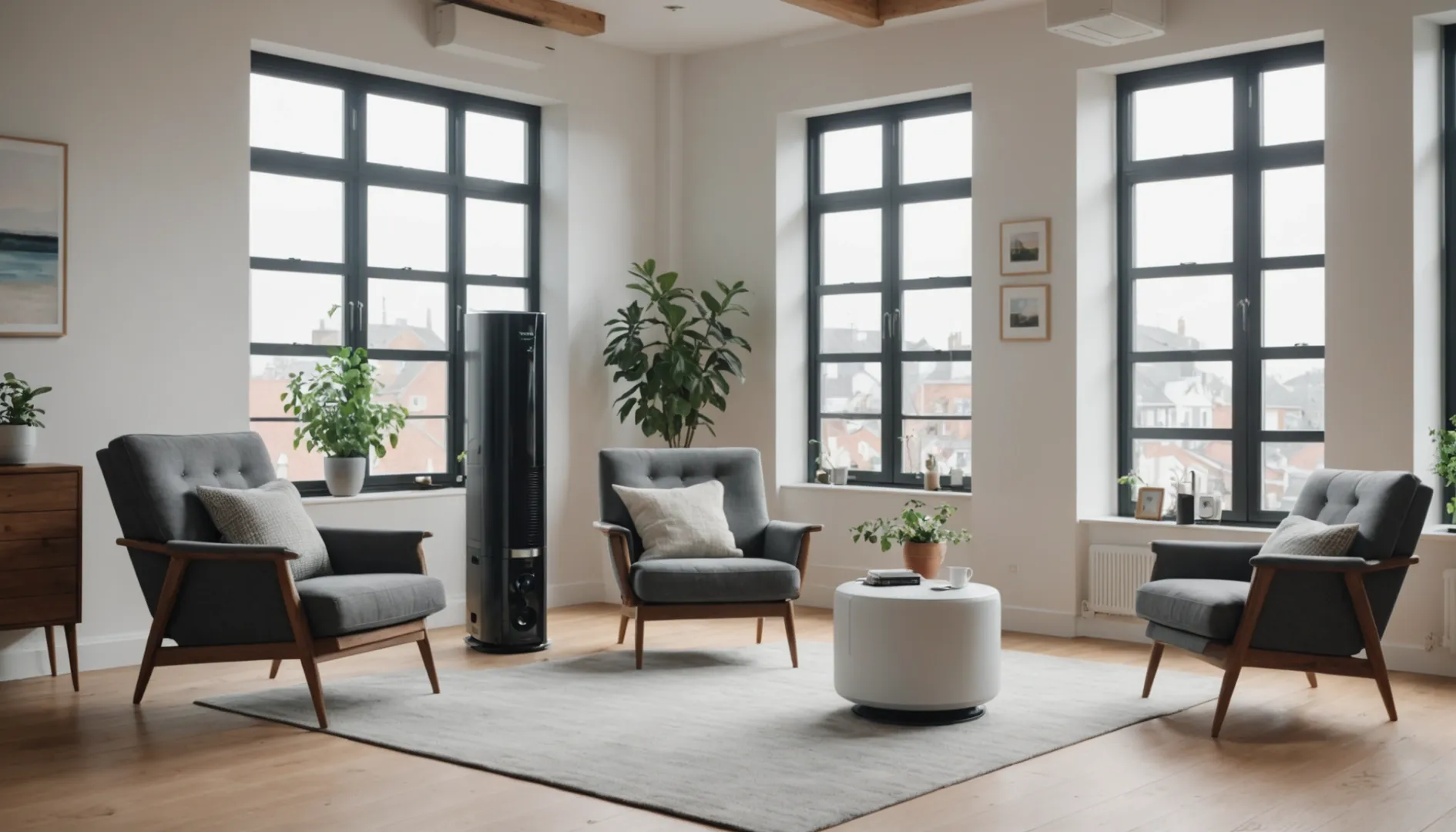
규정 준수 표준의 역할
규정 준수 표준의 중요성을 처음 깨달았던 때가 기억납니다. 공기청정기를 처음 구입한 직후였어요. 당시 저는 알레르기로 고생하고 있었고 작은 아파트의 공기를 정말 깨끗하게 정화할 수 있는 제품이 필요했어요. 그때 저는 AHAM 표준8를 통해 공기청정기가 연기, 먼지, 꽃가루를 얼마나 효과적으로 제거할 수 있는지 알 수 있었습니다. 이 사실을 알고 나니 제품이 특정 안전 및 효율성 벤치마크를 충족한다는 것을 믿을 수 있어서 구매에 더욱 확신이 생겼습니다.
마찬가지로 공조 시스템 유지 관리를 담당해 본 적이 있다면 여름에 시원하게, 겨울에 따뜻하게 유지하는 것만이 능사가 아니라는 것을 알고 있을 것입니다. 더 중요한 것은 ASHRAE 표준9 는 에너지 사용에 대한 가이드라인을 설정하는 동시에 시스템이 쾌적한 환경을 효율적으로 유지하도록 보장하기 때문에 매우 중요합니다. 이는 에너지 소비가 급증할 수 있는 대형 건물에서 특히 중요합니다.
디자인 및 성능에 미치는 영향
제가 공기청정기를 선택했을 때 HEPA 필터를 사용했는데, 0.3마이크론 크기의 입자를 99.97% 제거할 수 있는 특정 여과 성능을 충족했기 때문에 그렇게 했습니다. 알레르겐과 오염 물질을 효과적으로 걸러주었기 때문에 제 알레르기 증상이 눈에 띄게 달라졌습니다. HVAC 시스템의 경우 다음을 준수합니다. ASHRAE 표준은 온도와 습도 수준을 효율적으로 조절하도록 설계되어 특히 무더운 여름에 생명의 은인이었습니다.
기술 발전과 미래 트렌드
기술은 항상 진화하고 있으며, 공기 정화 역시 마찬가지입니다. 저는 최근에 다음과 같은 혁신에 대해 읽었습니다. Wellcube10는 건물 관리 시스템과 통합되어 공기질을 개선하는 휴대용 공기청정기입니다. 향후 규제에 따라 2025년까지 모든 신규 시스템에 공기 정화 기술이 내장되어 실내 공기질 개선에 대한 요구 사항을 충족해야 할 수도 있습니다.
최신 정보 유지의 중요성
팬데믹을 겪으면서 실내 공기질에 대한 경각심이 더욱 커졌습니다. 규정 준수 기준을 이해한 덕분에 집안의 안전을 지키기 위해 제품을 구매할 때 더 나은 선택을 할 수 있게 되었습니다. 제조업체 입장에서는 이러한 기준을 준수한다는 것은 안전과 혁신을 점점 더 중요시하는 시장에서 제품의 경쟁력을 유지한다는 것을 의미합니다.
공기청정기는 AHAM 표준을 준수합니다.True
공기청정기는 가전제품으로 간주되며 AHAM 표준을 준수합니다.
HVAC 시스템은 공기 정화를 위해 HEPA 필터를 사용합니다.False
HVAC 시스템은 일반적으로 HEPA 필터가 아닌 MERV 13-16 필터를 사용합니다.
공기 정화 기술을 형성하는 미래 트렌드는 무엇일까요?
저는 항상 공기의 질이 우리의 일상을 어떻게 변화시킬 수 있는지에 매료되어 왔으며, 공기 정화에 대한 이러한 흥미로운 트렌드는 완전히 새로운 차원으로 나아가고 있습니다.
공기 정화 기술의 미래는 첨단 필터링, 스마트 홈 통합, 에너지 효율과 지속 가능성에 대한 노력의 혁신에 의해 주도되고 있습니다.

고급 필터링 시스템
고품질 필터를 사용한 후 공기가 얼마나 깨끗해졌는지 처음 느꼈던 때가 기억납니다. 그 이후로 얼마나 많은 발전을 이루었는지 생각하면 놀랍습니다. 고효율 미립자 공기(HEPA) 필터는 여전히 작은 입자를 가두는 데 있어 최고의 표준이지만, 이제 더 많은 첨단 소재를 추가하고 있습니다. 다음과 같은 혁신 광촉매 산화11 그리고 활성탄 필터12 는 성가신 VOC와 지독한 악취를 해결하기 위한 솔루션으로 각광받고 있습니다.
스마트 홈 기술과의 통합
공기청정기를 홈 네트워크에 연결한 날은 획기적인 전환점이 되었습니다. 이제 스마트폰 터치 한 번으로 집안 어디에 있든 집안의 공기질을 제어할 수 있습니다. 이제 많은 기기가 Wi-Fi와 함께 제공되므로 스마트 홈 시스템과 원활하게 동기화할 수 있습니다. 실시간 데이터를 기반으로 공기 설정을 조정하는 센서가 있다면 마치 개인 공기질 비서가 있는 것과 같다고 상상해 보세요! 다음의 통합 IoT13 는 이제 공기청정기가 HVAC 시스템과 함께 작동하여 최대한 에너지 효율을 높이는 훨씬 더 큰 그림의 일부가 되었음을 의미합니다.
에너지 효율성 및 지속 가능성에 집중하기
저는 항상 환경 발자국에 대해 걱정해왔기 때문에 공기청정기가 지속 가능성을 향해 나아가는 것을 보면 정말 고무적입니다. 기술과 디자인의 발전 덕분에 공기청정기의 에너지 효율이 점점 더 높아지고 있습니다. 통합 재생 에너지원14 친환경 제조 재료를 사용하는 것은 이러한 기기들이 지구에 미치는 영향을 줄이는 방법 중 일부에 불과합니다. 또한 법규는 제조업체들이 친환경 혁신으로 나아갈 수 있도록 유도하고 있으며, 이는 환경을 생각하는 우리 모두에게 윈윈입니다.
향상된 실내 공기질 관리
코로나19 이후 많은 사람들이 그렇듯 저도 실내에서 호흡하는 공기에 대해 더욱 주의를 기울이게 되었습니다. 이제 기술은 단순히 공기를 정화할 뿐만 아니라 공기질을 총체적으로 관리하는 솔루션을 제공하고 있습니다. Wellcube와 같은 시스템은 건물 인프라와 통합되도록 진화하고 있으며, 이전과는 전혀 다른 방식으로 실내 공기질에 대한 인사이트를 제공합니다. 공기 정화가 곧 더 크고 스마트한 실내 환경 관리 퍼즐의 한 조각에 불과할 것이라고 생각하면 놀랍습니다. 공기질을 지속적으로 모니터링하고 자동으로 최적화하는 세상이 더 이상 공상 과학 소설이 아니라고 상상해 보세요.
공기청정기는 HEPA 필터를 사용하여 여과율이 높습니다.True
공기청정기의 HEPA 필터는 0.3마이크론 입자를 99.97% 포집합니다.
HVAC 시스템은 공기청정기보다 비용 효율적입니다.False
HVAC 시스템은 공기청정기와 달리 많은 비용이 드는 사용자 지정 및 설치가 필요합니다.
결론
공기청정기는 다음과 같이 작은 입자를 제거하는 데 탁월합니다. HEPA 필터를 사용하는 반면, HVAC 시스템은 집 전체의 쾌적함을 관리합니다. 두 가지 모두 실내 공기질 개선을 위해 더 스마트하고 통합된 솔루션으로 진화하고 있습니다.
-
실내 공기를 위한 HEPA 필터의 효율성과 이점에 대해 알아보세요. ↩
-
HVAC 시스템이 공기질과 환기를 관리하는 방법을 살펴보세요. ↩
-
공기청정기 및 HVAC 설계에 영향을 미치는 규정 준수 표준에 대해 알아보세요. ↩
-
공기질 관리 시스템의 최첨단 개발 동향을 알아보세요. ↩
-
포괄적인 이해를 위해 일반적인 설치 비용을 살펴보세요. ↩
-
통합으로 실내 공기질을 개선하는 방법을 알아보세요. ↩
-
대기질 솔루션에 영향을 미치는 향후 규제를 이해하세요. ↩
-
공기청정기 제품의 효과 기준에 대해 알아보세요. ↩
-
에너지 비용 절감을 위한 HVAC 효율 가이드라인을 이해하세요. ↩
-
정화 기술과 빌딩 시스템을 통합하는 혁신을 살펴보세요. ↩
-
이 기술이 어떻게 오염 물질을 효과적으로 분해하는지 알아보세요. ↩
-
VOC와 냄새를 제거하는 데 있어서의 역할에 대해 알아보세요. ↩
-
IoT로 제어 및 효율성을 향상하는 방법을 살펴보세요. ↩
-
친환경 기술이 어떻게 통합되고 있는지 알아보세요. ↩


